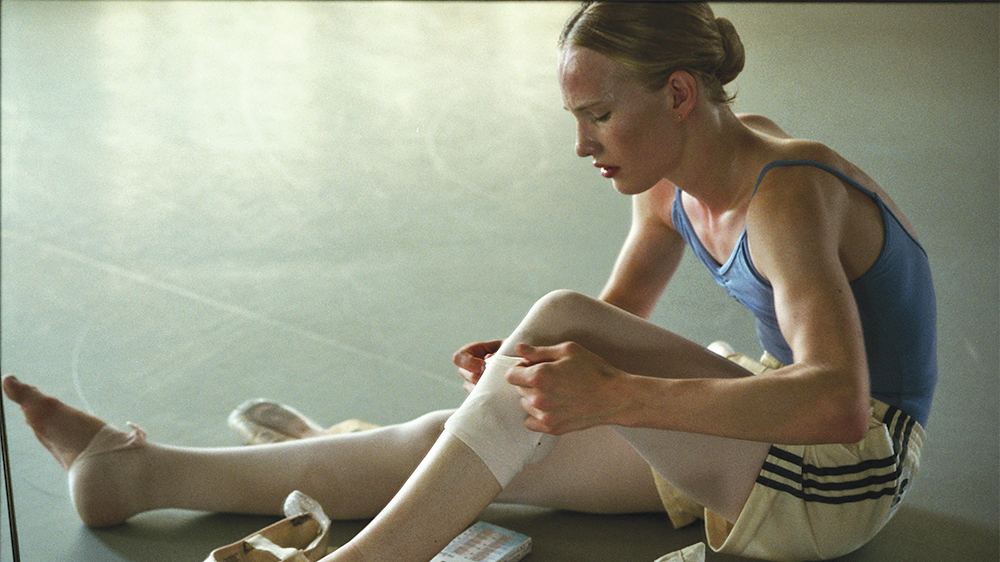Trans Drama ‘Girl’ Wowed Cannes, but Can It Impress American Audiences?
By Peter Debruge
LOS ANGELES (Variety.com) – No film won more prizes at the Cannes Film Festival this year than “Girl,” an intimate portrait of Lara, a transgender teenager whose all-consuming desire to be a ballerina is held back by the fact that she was born into a boy’s body.
Directed by Belgian newcomer Lukas Dhont, the film wowed three juries, earning the Caméra d’Or for best first feature, the Queer Palm for best LGBT-themed film and a gender-blind prize for best performance in the Un Certain Regard section. Netflix snapped up North American rights with an eye to a fall awards-season theatrical release.
But Netflix may find it has a tough sell on its hands.
International audiences have different attitudes toward transgender representation than Americans do, and early reactions from U.S. critics have raised red flags that the festival darling may encounter a pricklier reception when it opens in this country.
The recent outcry over the casting of Scarlett Johansson as a trans man in “Rub and Tug” resulted in her withdrawal from the project and an aggressive call for more inclusion of trans actors in movies and TV shows.
Though many viewers assume otherwise, Victor Polster, the ballet student who plays Lara in “,” is cisgender — he was born male and identifies as such — which could spark controversy in the States.
“If there’s such a thing as a male gaze, there’s a cis gaze,” says Nick Adams, GLAAD’s director of transgender media & representation, who encourages cis filmmakers interested in telling trans stories to engage trans people — on either, and ideally both, sides of the camera — at the beginning of the process. “When you don’t know what you don’t know, when you don’t know where the tropes and clichés are, you run the risk of repeating them.”
Dhont, who routinely cast trans youth for his traveling “The Common People” stage project and consulted extensively with doctors at Ghent University Hospital as he was developing “Girl,” focuses in the film almost entirely on Lara’s transition, as well as the impatience she feels in limbo, dramatizing her frustration with her unchanging anatomy via a desperate act that some trans advocates see as highly problematic and possibly dangerous.
To his credit, Dhont didn’t have a specific gender in mind when casting the part. Together with screenwriter Angelo Tijssens and choreographer Sidi Larbi Cherkaoui, the director held an open casting call, where they saw an estimated 500 young people — male, female and those who didn’t identify as either — for the role of Lara and her fellow dancers. Dhont says seven trans people auditioned.
“At the end of it, the three of us had one number on the top of our list: Victor immediately stood out for us. He has this almost angel-like look,” says Tijssens. “For us, he had the perfect softness while also being an incredible dancer, which is a combination that is so hard to find.”
Whereas American filmmakers often make it a point to reach out to GLAAD during pre-production for input and perspective, foreign films made according to other cultural standards arrive fully completed, making it virtually impossible to address elements that might be deemed insensitive. For instance, Chilean director Sebastián Lelio’s Oscar-winning “A Fantastic Woman” is considered a model of trans representation, but Guillaume Gallienne’s 2013 French hit “Me, Myself and Mum” (a comedy about an effeminate boy whose mother mistakes him for gay) handled its subject in a way that made American distributors uncomfortable.
According to Dhont, “Girl” was inspired by an article he read in a Belgian newspaper about Nora Monsecour, a 16-year-old trans girl who aspired to what some consider the highest form of femininity: She wanted to dance ballet.
“I was 18 at the time, and I didn’t have the feeling that I was comfortable with every part of my sexuality, so in a way she was a personal hero of mine,” says Dhont, who was then a closeted film student. In 2010, he reached out to Monsecour about telling her story. The two became friends, with Monsecour offering input throughout the process.
“Unfortunately, the true story is a lot less positive than ‘Girl,’” explains Dhont, who was determined to make an empowering film in which the character wasn’t a passive victim, constantly fending off attacks from her community and at school as Nora had. In Dhont’s more enlightened, “21st-century version,” Lara’s father, teachers and classmates are all relatively supportive.
“It was really important to show a trans character surrounded by love,” says the director, who hopes a Netflix release will allow “Girl” to reach parents and teens in their homes. “We wanted to make a film where my dad, my mom and my trans friends could identify with the character and her journey.”

